By Team Star of Mysore: V. Shourabh, S.T. Ravikumar, Rajkumar Bhavasar, M.B. Pavan Murthy and M.N. Lakshminarayana Yadav
It is time for the Lord of Lords — Lord Ganesha — to arrive. The most powerful and the most merciful of all Gods needs some extra care and some extra attention. It is only fair that we pamper Him to the fullest and extend Him a grand celebration. But make sure not to disappoint Him by harming the environment opting for Plaster of Paris and paper-moulded idols and later immersing them, choking water bodies. You have better ways to impress the elephant-headed God and one among them is going Green. With Ganesha Chaturthi round the corner, clay artisans in city are working overtime to meet the demand for Gowri-Ganesha idols. The festival falls on Sept.12 and 13.
This Weekend Star Supplement features artisans who have gone Green this year with eco-friendly idols devoid of Plaster of Paris and laced with natural dyes and colours.
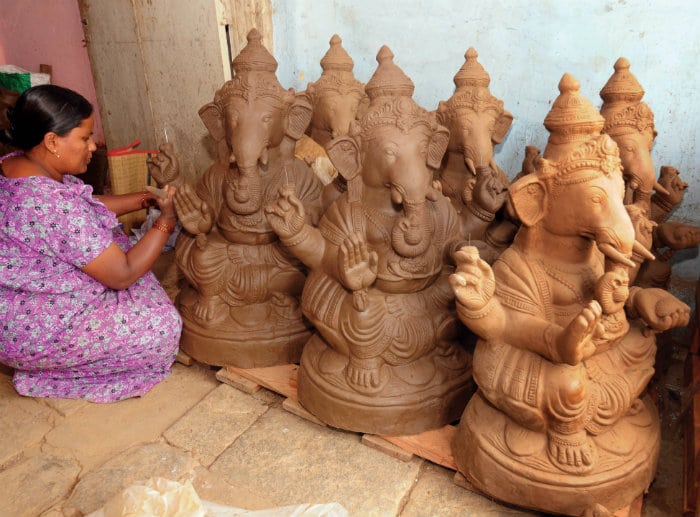
This Ganesha Chaturthi… Go the Eco-friendly way
Here’s some encouraging news for nature lovers and environmentalists. After years, the Mysuru City Corporation has finally woken up to the need of checking unabated pollution of water bodies while immersing idols during Ganesha festival.
Despite a slow start, the trend of eco-friendly idols has started gaining acceptance after the initiative was launched last year and continued this year in a more elaborate manner. Even there is awareness and an encouraging response from devotees towards eco-friendly initiatives.
Ganesha Chaturthi also known as Vinayaka Chaturthi marks the birth of Lord Ganesha and is celebrated across India. Every year, people buy idols of Lord Ganesha and worship it during
the festival as they believe that Ganesha will come down to their homes to bestow blessings, wisdom and prosperity.
The celebration culminates with immersion of idols. As most of the idols are made with Plaster of Paris (PoP) or paper-moulded idols, immersion causes harm to nature, marine life, ecosystem and the environment.
Lately, a few people — rather many — have realised the need to protect the environment and have moved to the age-old traditional practice of installing eco-friendly idols that are biodegradable. The MCC has issued a warning to idol-makers on not to use PoP.
With Ganesha Chaturthi and the essence of festivity round the corner, Mysuru city is all set for the grand celebrations. Star of Mysore interacted with a few idol-makers who are experts in making natural eco-friendly idols.
Read on…
Men who make Gods
Lord Ganesha is also the patron of art and artisans who make the idols, replicate the artistic touch and essence through their sculptures. Clay idol makers carve finer details such as the face curves, the eyes, the trunk, the calm posture, etc. and not just evoke a sense of devotion in the minds of worshippers and viewers but also evoke a sense of concern towards Mother Earth.
Raghavendra, an idol-maker in Vinayakanagar (Paduvarahalli) says, “Making Ganesha idols is an art. I have been making idols here since 15 years. My mother Premamma has been making Ganesha idols since her childhood. She started learning this art and now that art has been passed on to me. She used to make idols near the City Market those days. But now we make it here. We make the idols here and sell them near Olympia Talkies. We also take bookings and people come here and pay advance.”
“We design the size and bring in our creativity according to customer requirements. We make idols of both Ganesha and Gowri. We use mould to design shapes. We use clay and put it in the moulds to get the desired shape. Making idols is not an easy process. It is time-consuming and involves a lot of labour,” he explains.
“We have to get loads of clay, clean it and prepare required moulds using PoP. We prepare moulds like the head and the crown of Ganesha, the various body parts, trunk etc. We then fill the mould with clay mud and let it settle. After it settles, we bring in all the parts and assemble it as one single idol.”
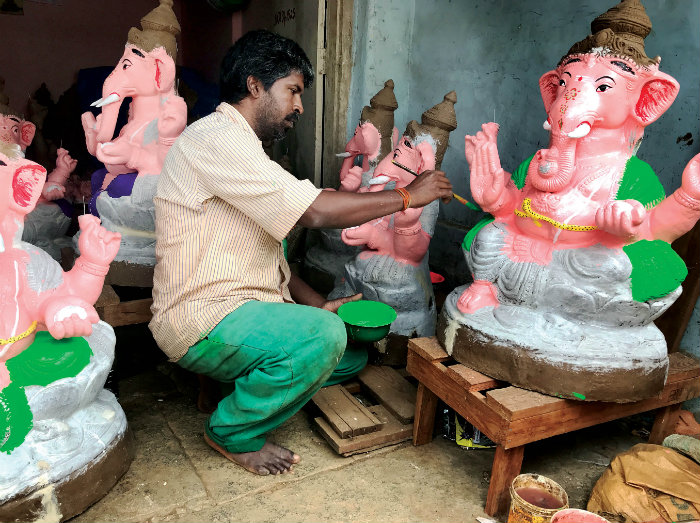
Raghavendra is seen painting one of his Ganesha idols.
A small idol takes about 20 to 30 minutes to be prepared while the large ones take about 3 to 5 hours. “My mom is an inspiration. She is 78 years old, and even now she makes idols with enthusiasm. She works hard and has been a role model for us. We start making idols 3 to 4 months prior the festival. We sell idols till the arrival of festival and a few people buy the idols even after the festival,” he explains.
Speaking about the eco-friendly aspect, he says, “We use only water paints to paint our idols. We don’t use any harmful chemicals. Even the idols that we make easily dissolves in water and turns into mud. It will not cause any harm like that of the POP idols.”
Is PoP banned or not? I’m still confused: Idol-maker Kumar
Idol-maker Kumar, popularly known as Ganapathi Kumar, makes idols of Ganesha at his residence in Vinayakanagar in Paduvarahalli. He says, “Our family has been known to make idols of Lord Ganesha. It started from the time of our grandfathers. We used to do pottery those days. But with modernisation, and development of the city, we are unable to continue pottery as there are no spaces. Pottery making requires huge amount of space. With more number of houses coming up at places, we decided not to continue pottery.”
“Personally, I have been making idols of Ganesha since my birth. Me and my family make the idols here and sell it also near the Sri Andal Mandir on Temple Road. We use clay for the idols. But one thing that is confuses me and probably the customers too. Is PoP really banned? I don’t have an answer. Because over the years I have seen PoP idols being made and sold everywhere. Before PoP was in the market, our clay idols were in huge demand. Once PoP idols came, we lost much of our business. Because most of the customers buy PoP idols,” he says.
“People buy PoP and highly-coated painted idols that can be hazardous to the environment. And I have heard this common statement from customers that PoP and coloured Ganesha idols is fine for us as we immerse the idol in our own buckets and not in any other water body. There should be a clear mention of rules and regulations on the ban and purchase of PoP idols. We, the traditional clay idol-makers are really confused,” he explains.
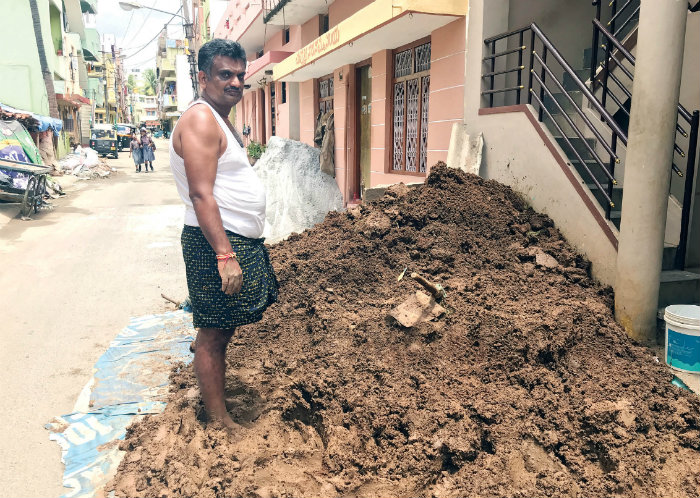
Idol-maker Kumar is seen amidst a mound of clay mud as he filters impurities.
Kumar who also conducts summer camps and classes at schools and various colleges and teaches them the art of pottery and making pots, vases and idols, says, “For a business period of 2 to 3 days, we have to work hard for about 4 to 5 months. We have to get clay, then filter and remove the impurities like stones,gravel, hay, grass etc. Then we have to soften the mud for several days by adding proper water and make it exactly like the Chapatti dough. The clay mud must turn into a smooth texture. Until then we have to keep working on it,” he says.
After this, mud is put into moulds and the clay takes the shape of the mould. “We remove it, scrape the edges and unwanted mud. We then need to give finer touching to give finer details like the eyes, ears and face etc. The process is long. But PoP powder takes about 30 minutes to set and the idol is made within no time. But people do not realise the value of the traditional clay idols. And when idols are not sold, we have to save them until the next year and that requires space and care as even the rains can dissolve the idol. Our family members make the idols and my uncle Subramaniam also pitches in. During the off season, I drive an auto,” he says.
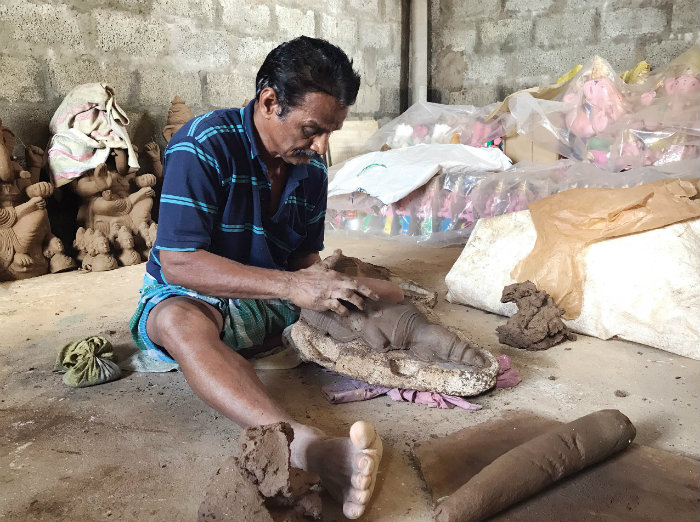
Subramaniam, one of the family members of idol-maker Kumar, seen with the Ganesha mould.
Demand for clay Ganesha is slowly increasing
Revanna, a Ganesha idol-maker near Kumbarageri on Ashoka Road credits his father Dasappa for passing on the art of idol making to him. He says, “We have been making idols for over 40 years. It was my father Dasappa who taught me this art. I also attended CAVA (Chamarajendra Academy of Visual Arts) and studied sculpture and painting. We prepare idols of different sizes and we have several tools for giving it the exact finishing touch. Most customers are keen about specifications and thus we must be very specific when detailing the idol’s appearance,” he says.
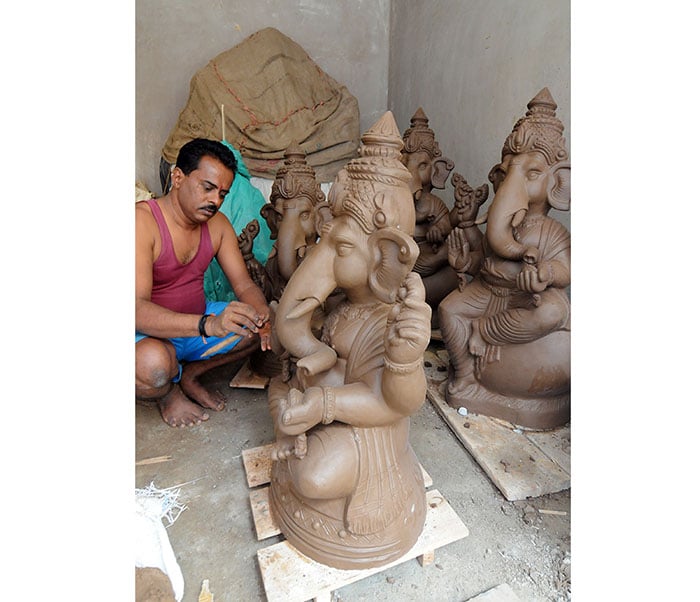
D. Revanna giving finishing touches to his Ganesha Idols at Kumbarageri near Ashoka Road.
“We have regular customers who have been ordering idols from us since over 20 years. It is a good sign that lately many people are showing interest towards clay Ganesha. And since the last couple of years, people want Ganesha even without any sort of paint. The demand for plain clay mud idols is slowly increasing as the word of safety of environment is spreading. My mother Lingamma also helps me in painting and designing idols. Creativity is the key and I try to bring in my experience to make innovative and creative idols,” he explains.
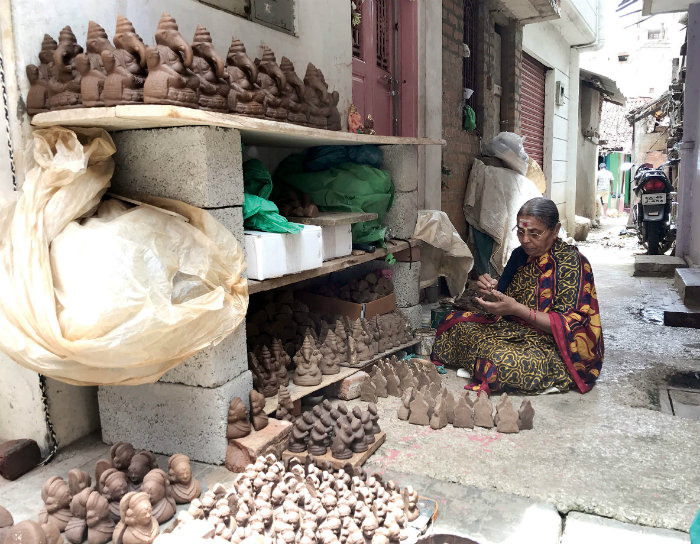
Lingamma, mother of D. Revanna, dexterously carving the details on idols.
Made-to-Order Ganeshas
At the Veeraanjaneya Temple on Irwin Road, priest Krishnamurthy has been making idols since 15 years and he does not consider this as a business. “I make the idols and keep them within the temple premises as there is a lot of space. Every year, I make over 50 to 60 idols that range from two feet to eight feet. I have buyers from Lashkar Mohalla, Mandi Mohalla and Paduvarahalli. I do this as there is tremendous pressure from the devotees as they have got used to my eco-friendly idols. I consider this as a service and not as a business and sell the idols with a small profit,” he says. Krishnamurthy does not use PoP and uses clay and water colours that can easily dissolve in water.
Even at Hebbal Second Stage opposite State Bank, near the MUDA Market (Raitha Santhe), idols are sold anywhere between Rs. 4,000 to Rs. 10,000. Paramesh, an idol seller from Lokanayakanagar has been in the business since the last three years. He sells idols near the Annapoorneshwari Temple and only eco-friendly idols are sold.
On Ashoka Road First Cross, Kumbarageri Puttaswamy has been selling idols since the past 30 years. He makes colourful idols like Gandabherunda Ganapa, Ganesha with Mysore Peta. He says that the demand for the Lord on a lotus is great. Puttaswamy is nick-named Parisara Puttaswamy as he only makes eco-friendly idols.
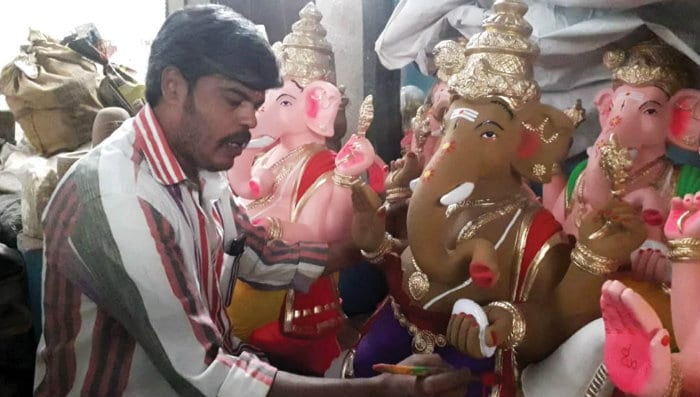
Puttaswamy giving final touches to Ganesha idols.
Adjacent to Panchamukhi Anjaneya Swamy Temple on Irwin Road, one will only get green Ganapa. An exclusive stall “Sri Panchamukhi Jedimannina Gowri Ganesha Vigrahagalu” has come up where idols including miniature ones to large ones are sold. Paint is not prominent on these idols as they are used to the minimum extent. Even those paints are water colours and are made of natural colours.
“We have been selling these idols since the last 20 years and we open our stall at the same place every year. We procure these idols from Devanahalli and Dasarahalli in Bengaluru and from Kolar. Ours are made-to-order idols and we strictly deal with eco-friendly idols,” says Yeshwanth the son of shop owner Nagesh.
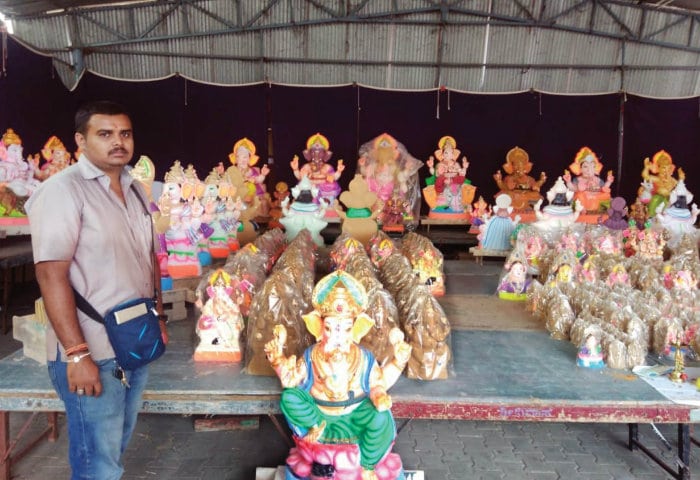
Yeshwanth at his outlet near Panchamukhi Anjaneya Temple on Irwin Road.
“It is very easy to transport PoP idols as they don’t break easily. But in the case of our idols, enough care must be taken on road and even a small road hump or a pothole can destroy an idol. For this, we wrap idols in hay and paddy husk,” he adds. Idols here are available for as less as Rs. 100 and can go up to Rs. 12,000.
Single window system for installing idols: DC
Mysuru Deputy Commissioner Abhiram G. Sankar has directed officials to set up a single window system to cater to the request of general public and organisers of various associations who are installing Gowri-Ganesha idols in public places.
At a meeting to oversee preparations to check the sale of hazardous Plaster of Paris idols ahead of Gowri-Ganesha festival, he asked the officials to set up a single window system so that people can obtain pre-requisite permission from both city police and Mysuru City Corporation (MCC) authorities under one roof. Earlier, people had to visit two different offices at different locations to seek permission.
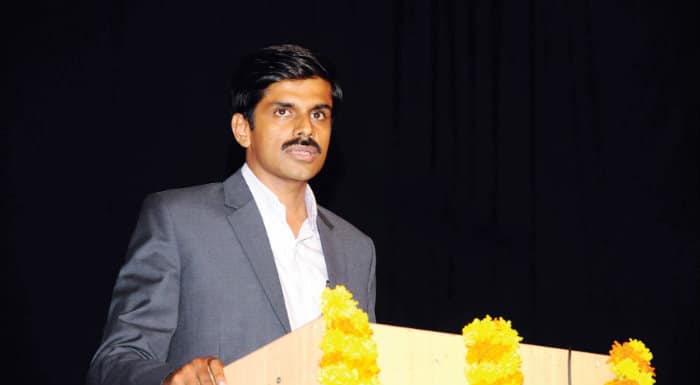
DC Abhiram G. Sankar
Stressing on the need of going green during the festival season, he said that idols made of Plaster of Paris and paper moulds and painted using different colours pose a threat to water bodies after the immersion. He said that a team will be formed to look into the complaints of selling such banned idols.
The MCC has been tasked with the job of building artificial ponds for immersion of idols. Also, mobile water tanks will be stationed at prominent locations for the benefit of public.
Contemporary Ganeshas
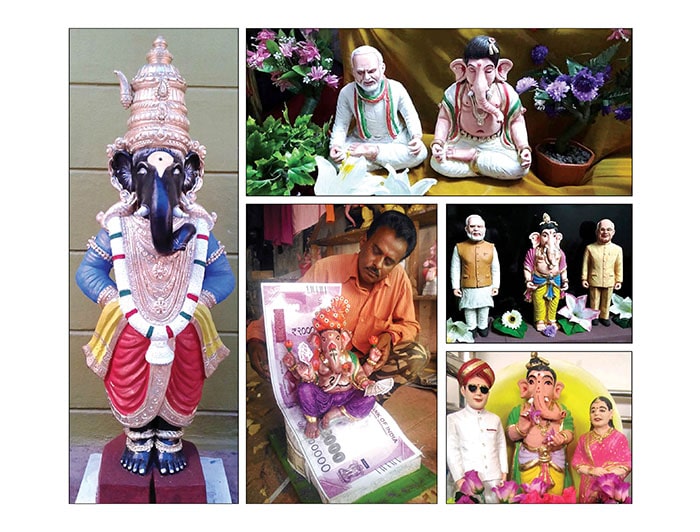



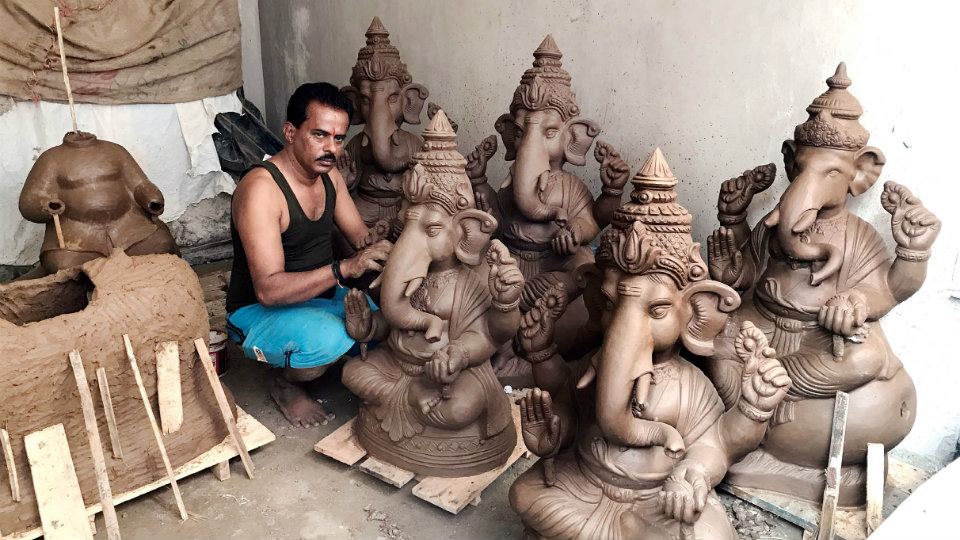
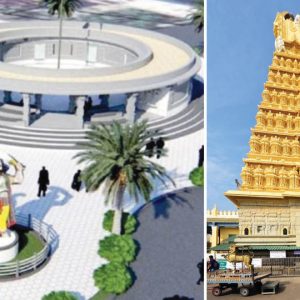
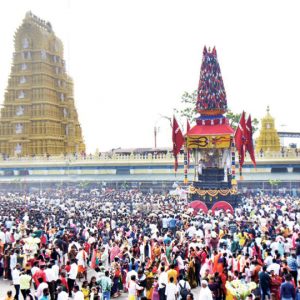

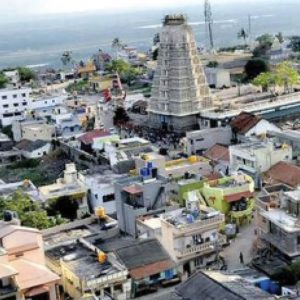
Recent Comments